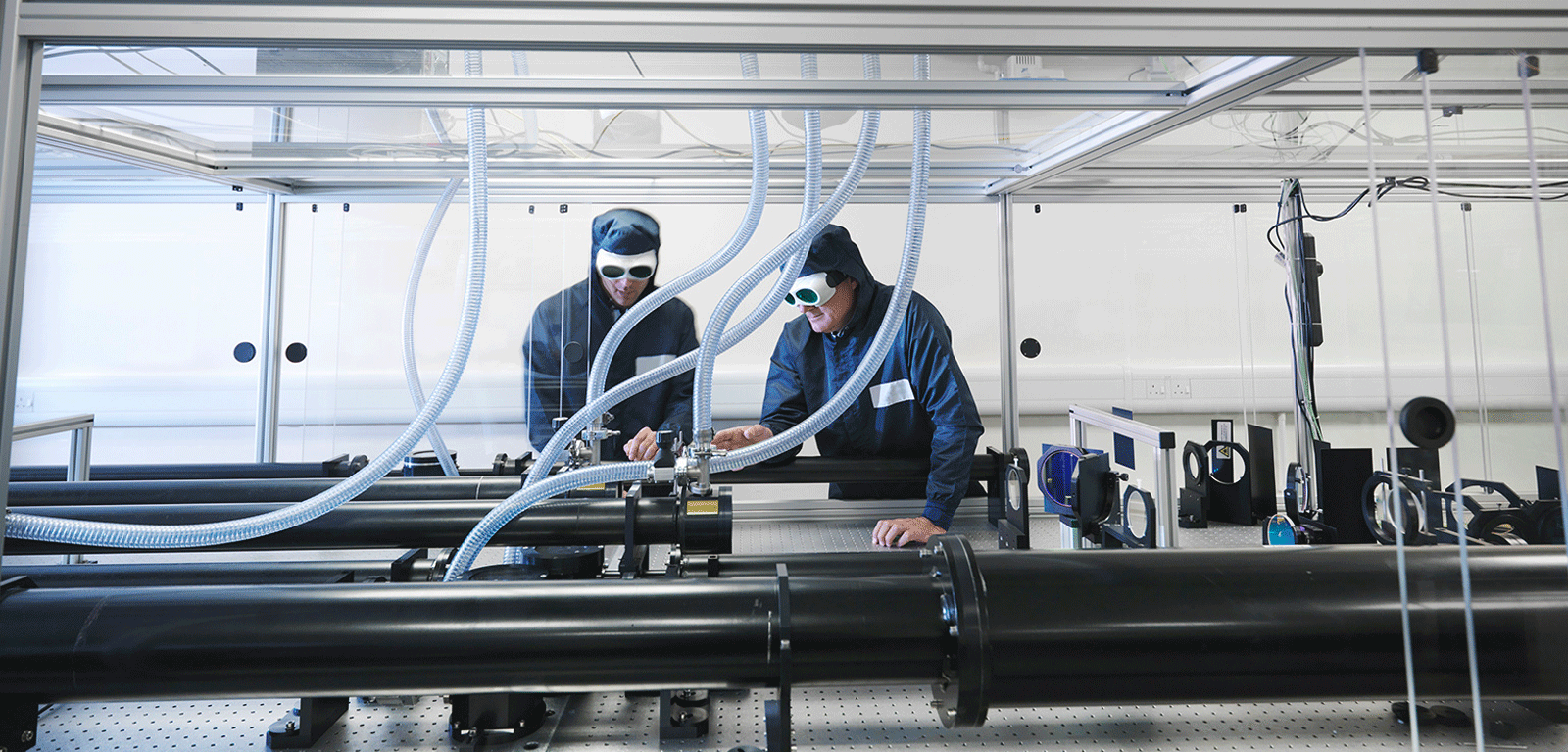Queen’s research brings us a step closer to treating cancer using laser-driven proton therapy
A new study by researchers from Queen’s University Belfast brings us a step closer to alternative methods of treating cancers using proton beams accelerated by lasers, a method that can be less damaging to patients than other treatments.

A study by an interdisciplinary team led by Professor Marco Borghesi and Professor Kevin Prise from Queen’s University Belfast, looked at how lasers could provide an alternative method of accelerating and delivering the proton beam for therapy.
The researchers used the Science and Technology Facilities Council (STFC) Central Laser Facility’s (CLF) Gemini laser system to increase understanding of how ultrashort proton pulses affect human cells.
Proton therapy has emerged as a better way to treat some cancers compared to conventional radiotherapy because proton beams can target tumours without damaging the surrounding organs or tissue.
It is often used to treat brain tumours in young children whose organs and tissues are still developing. The technique is also used to target cancers in particularly vulnerable parts of the body, like the liver, lungs, head and neck, prostate and breast.
Lead author Professor Marco Borghesi, from the School of Mathematics and Physics at Queen’s, said: “This experiment contributes to unravelling some of the underlying biological processes, and shows that laser-driven techniques for producing high-energy particle beams are already mature enough to allow controlled radiobiology experiments in a high-power laser laboratory.”
Currently high-energy proton beams are delivered using large and expensive infrastructure in clinical settings, which means that scientists are searching for approaches that could prove cheaper, be more flexible and clinically more effective.
However, conventional and laser-based accelerators are significantly different. The radiation dose using laser-driven proton beams is delivered in an extremely short time period compared to conventional sources. Ions are emitted from the laser source in less than a trillionth of a second, typically reaching the target in pulses of a thousand millionth of a second. This research looked at whether laser-driven beams will have the same biological effects compared to the conventional sources.
The project used Gemini’s laser pulses to investigate the effects of irradiating human skin cells with the proton beam, a key step before lasers can be adopted in a clinical environment to treat cancer. It looks specifically at how DNA damage in human skin cells is repaired after being targeted by a laser accelerated proton beam compared to how it is repaired after using conventional sources. The research shows that the effect is similar, suggesting that laser proton beams could be used to target cancer cells as successfully as conventional accelerators.
In addition, evidence is currently emerging indicating that ultrashort dose delivery could reduce the damage inflicted on healthy cells affected by radiation on the way to the tumour. Researchers plan to investigate this effect further in upcoming experiments at CLF, which will also look at the effect of ultrashort pulses on brain tumour cells in addition to normal cells and will use three dimensional cells structures rather than planar cell cultures used in this study.
CLF’s Dr Rajeev Pattathil said: “A high-intensity, short pulse laser like Gemini provides the right conditions for producing these high energy ion beams. This makes the system ideal to investigate how useful lasers could be in proton therapy.”
Media
Media inquiries to Jemma Greenlees at Queen’s University Communications Office T; +44 (0)28 9097 3087 E; j.greenlees@qub.ac.uk.